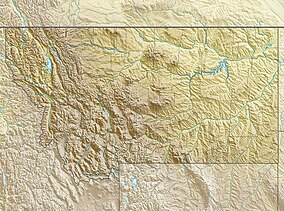로즈마린산
Rosmarinic acid | |
| 이름 | |
|---|---|
| 우선 IUPAC 이름 (2R)-3-(3,4-디히드록시페닐)-2-{[(2E)-3-(3,4-디히드록시페닐)prop-2-enoyl]옥시}프로판산 | |
| 식별자 | |
3D 모델(JSmol) | |
| 체비 | |
| 첸블 | |
| 켐스파이더 | |
| ECHA 정보 카드 | 100.123.507 |
| 케그 | |
PubChem CID | |
| 유니 | |
CompTox 대시보드 (EPA ) | |
| |
| |
| 특성. | |
| C18H16O8 | |
| 몰 질량 | 360.318 g/120−1 |
| 외모 | 레드 오렌지 파우더 |
| 녹는점 | 171~175°C(340~347°F, 444~448K) |
| 미용해성 | |
| 다른 용제의 용해성 | 대부분의 유기[1] 용제에 잘 용해됨 |
달리 명시되지 않은 한 표준 상태(25°C[77°F], 100kPa)의 재료에 대한 데이터가 제공됩니다. | |
로즈마리(Salvia rosmarinus Linn)의 이름을 딴 로스마린산은 로즈마리(Salvia rosmarinus L.), 들깨(Perilla frutescens L.), 세이지(Salvia officialis L.), 민트(Menthavense L.), 바질(Basilium L.)를 포함한 많은 요리 허브의 폴리페놀 성분입니다.
역사
로스마린산은 1958년 이탈리아 화학자 스카파티와 오리엔테에 의해 로즈마리(살비아 로스마리누스)[2]에서 처음 분리되고 특징지어졌으며, 이 산의 이름을 따왔다.
화학
화학적으로 로스마린산은 카페인산 [1]에스테르이며, 티로신은 디히드록시페닐유산 경유로 또 다른 페놀 고리를 제공한다.그것은 360 달톤의 [1]분자량을 가지고 있다.
자연발생
로즈마린산 축적은 뿔나물, 양치과, 단떡잎식물 및 쌍떡잎식물 [3]혈관배엽의 여러 목에서 나타난다.
그것은 많은 라미아과([1][4]라미아목의 디코티론), 특히 네페토이데아목에서 가장 두드러지게 발견된다.그것은 Ocimum basilicum, Ocimum tenuiflorum, Melissa officinalis, Salvia rosmarinus, Origanum majoram, Salvia officinalis, thyme,[1][5] Peppermint와 같은 요리 허브로 흔히 사용되는 종에서 발견됩니다.마란타속(Maranta leuconeura, Maranta defa)과 탈리아속(Talia geniculata)[3][6]과 같은 마란타과의 식물에서도 발견된다.
로즈마린산 및 유도체 로스마린산 3--O-β-D-글루코시드는 뿔달팽이(Anthocerotophyta)[7]인 안토케로스 아그레스티스에서 찾을 수 있다.
대사
로스마린산의 생합성은 히드록시신나모일 [1]공여체로 일반 페닐프로파노이드 경로에서 4-쿠마로일-CoA를 사용한다.히드록시신나모일 수용체 기질은 시킴산, 퀴닌산 및 L-티로신에서 [3]유래한 3,4-디히드록시페닐유산이라는 시킴산 경로에서 유래한다.따라서 로즈마린산은 화학적으로는 3,4-디히드록시페닐락시산을 가진 카페산 에스테르이지만, 생물학적으로는 4-쿠마로일-4γ-히드록시페닐락시트로 [8]형성된다.로스마린산합성효소는 카페오일-CoA와 3,4-디히드록시페닐락시산을 사용하여 CoA와 로스마린산염을 생성하는 효소이다.히드록시페닐피루브산 환원효소 또한 이러한 [9]생합성에 관여하는 효소이다.
사용하다
식물원으로부터 추출하거나 제조에서 합성할 때, 로스마린산은 조미료, 화장품 또는 식이 [1]보충제로 식품 또는 음료에 사용될 수 있다.
레퍼런스
- ^ a b c d e f g h "Rosmarinic acid". PubChem, US National Library of Medicine. 10 July 2021. Retrieved 11 July 2021.
- ^ Scarpati, M. L.; Oriente, G. (1958). "Isolamento costituzione e dell'acido rosmarinico (dal Rosmarinus off.)". Ricerca Scientifica. 28: 2329–2333.
- ^ a b c Petersen, M.; Abdullah, Y.; Benner, J.; Eberle, D.; Gehlen, K.; Hücherig, S.; Janiak, V.; Kim, K. H.; Sander, M.; Weitzel, C.; Wolters, S. (2009). "Evolution of rosmarinic acid biosynthesis". Phytochemistry. 70 (15–16): 1663–1679. doi:10.1016/j.phytochem.2009.05.010.
- ^ ESR 분광법에 의해 결정되는 라미아과의 일부 페놀류 분포 및 분류학적 의미.J. A. 페더슨, 생화학적 체계학 및 생태학, 2000, 제28권, 229~253쪽
- ^ Clifford, M. N. (1999). "Chlorogenic acids and other cinnamates. Nature, occurrence and dietary burden". Journal of the Science of Food and Agriculture. 79: 362–372.
- ^ Abdullah, Yana; Schneider, Bernd; Petersen, Maike (12 December 2008). "Occurrence of rosmarinic acid, chlorogenic acid and rutin in Marantaceae species". Phytochemistry Letters. 1 (4): 199–203. doi:10.1016/j.phytol.2008.09.010.
- ^ Vogelsang, Katharina; Schneider, Bernd; Petersen, Maike. "Production of rosmarinic acid and a new rosmarinic acid 3′-O-β-D-glucoside in suspension cultures of the hornwort Anthoceros agrestis Paton". Planta. 223 (2): 369–373. doi:10.1007/s00425-005-0089-8.
- ^ "MetaCyc rosmarinic acid biosynthesis I". biocyc.org.
- ^ Petersen, M.; Alfermann, A. W. (1988). "Two new enzymes of rosmarinic acid biosynthesis from cell cultures of Coleus blumei: hydroxyphenylpyruvate reductase and rosmarinic acid synthase". Zeitschrift für Naturforschung C. 43: 501–504.


